NETHERLANDS
Rotterdam

Rotterdam
Rotterdam
Rotterdam is also known as the Maasstad. Rotterdam you either love the city or you hate the city. The city lost its heart during the bombing in World War II and there are hardly any old monuments. A new city has emerged after the reconstruction, with a lot of interesting architecture and the largest port in Europe. Rotterdam is part of the Randstad and is located in South Holland. The municipality of Rotterdam with the same name, with 589,870 inhabitants (30 Nov. 2009), is the second largest city in the Netherlands. The population of the metropolitan agglomeration is almost 1.2 million inhabitants. Rotterdam and its suburbs together form the largest urban area in the Netherlands. The name Rotterdam dates from the thirteenth century and refers to a dam in the river Rotte.
Rotterdam Station BlaakPhoto: Andre Engels CC 1.0 Unported no changes made
Location
Rotterdam is located on the Nieuwe Maas, one of the rivers in the delta formed by the Rhine and the Maas. The Nieuwe Maas divides the city into two parts. The center is located on the north bank. The Nieuwe Waterweg connects Rotterdam with the North Sea. The port is the largest in Europe. Rotterdam is the largest city in the province of South Holland.
Weather
Rotterdam has a moderate maritime climate. Winters are mild and summers cool. The weather can also be changeable in summer. It can sometimes snow in winter. The average temperature in January is around 3 °C, in July around 17 °C. The chance of rain is high all year round. There is an average of 790 mm of precipitation per year. The best time to travel is between April and September, when the least rain falls.
History
Around 1260 a dam was built in the Rotte where the Hoogstraat intersects with the Rotte. Rotterdam derives its name from this. A settlement arose around this dam where people initially lived from fishing. It soon also became a trading point and the first ports were created. Rotterdam was granted city rights in 1340 and a city wall in 1360. Jonker Frans (van Brederode) played an important role for Rotterdam during the Hoekse and Kabeljauwse disputes between 1488-1490. Thanks to Jonker Frans, Rotterdam definitely became a city of significance in Holland.
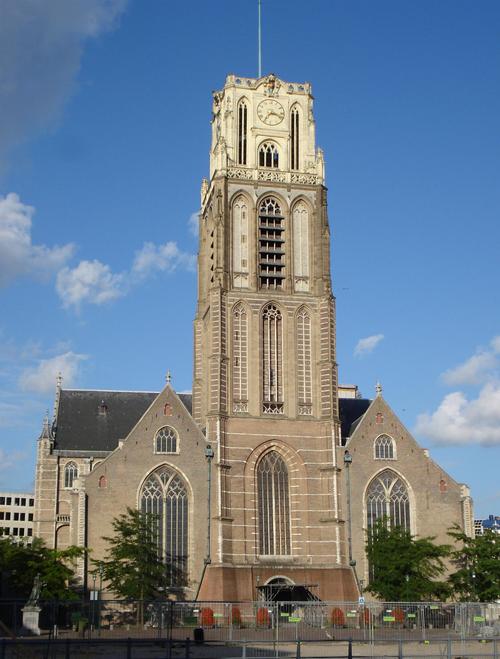 Rotterdam LaurenskerkPhoto: F.Eveleens CC 3.0 Unported no changes made
Rotterdam LaurenskerkPhoto: F.Eveleens CC 3.0 Unported no changes made
The late Gothic Laurenskerk was built between 1449 and 1525. In medieval Rotterdam this was the only stone building. It was an ambitious project, Rotterdam consisted of approximately 1200 houses at the time. In 1572, Rotterdam was sacked by troops of the Spanish stadtholder Bossu. In 1573, the city sided with the Dutch Revolt. The city then had about 10,000 inhabitants. At the end of the 16th century, Johan van Oldenbarnevelt, who was Grand Pensionary of the city from 1576 to 1586, had the port of Rotterdam further developed, thus laying the foundation for the important place that this city will acquire in the maritime trade. At the 1622 census, the population had grown to about 20,000. By the end of the 17th century, there would be as many as 50,000. Despite this, the city did not expand beyond its ramparts and canals. The more or less triangular space between Coolsingel, Goudsesingel and the Nieuwe Maas was no more than 140 hectares, so the city became overcrowded. It would not expand beyond these borders until after 1825.
In the 19th century, the position of Rotterdam as an international port was threatened by the silting up of the main connection with the sea, the Brielse Maas. To overcome this problem, the Voornse canal was dug by the island of Voorne between 1827 and 1830, between Rotterdam and Hellevoetsluis. However, as sea-going vessels grew in size in the 19th century, this channel proved inadequate. Engineer Pieter Caland designed an ambitious plan for a new connection to the North Sea. Implementation of this was started in 1866. Between 1866 and 1872, the Nieuwe Waterweg was dug, a direct shipping connection with the North Sea between Rotterdam and Hook of Holland. After the opening of the Nieuwe Waterweg, the turbulent growth of Rotterdam began. Several new ports were built, which greatly increased employment. This attracted workers from all over the world. The money earned by the city was spent, among other things, on the construction of stately buildings in the center. The city was expanded in two ways: by annexing a number of surrounding municipalities and by building many new neighborhoods. The first wave of annexations took place at the end of the nineteenth century with Delfshaven (1886), Kralingen, part of Overschie and Charlois in 1895. The ports were expanded at a rapid pace, under the influence of people like Lodewijk Pincoffs and G.J. de Jongh. More and more ports were constructed, such as the Maas, Rhine and Waalhaven.
Attracted by the resulting employment, many farmers, especially from North Brabant, moved to the city. The prevailing agricultural crisis amplified this effect. Rows of cheap houses were quickly built for the newcomers, especially on the south bank of the left bank of the Maas, which was therefore soon called the peasant side. Between 1880 and 1900, the population grew rapidly from 160,000 to 315,000. In 1920, the population would even exceed 500,000 inhabitants.
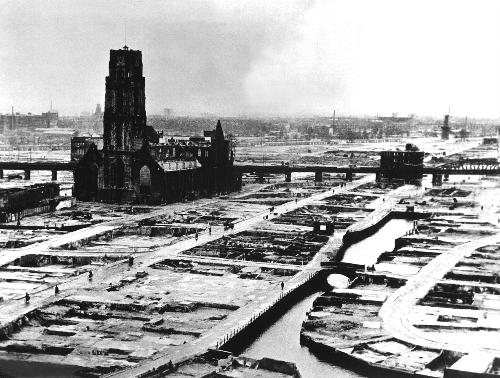 Rotterdam BombardmentPhoto: Public Domain
Rotterdam BombardmentPhoto: Public Domain
Everything changed on May 14, 1940. At that time, the Netherlands had been at war for five days. Already on the first day many German paratroopers and airborne troops landed around Rotterdam South. The North Island was also occupied. However, the Dutch garrison and parts of the Marine Corps keep the Maasoever and Maasbridges constantly at gunpoint, preventing the Germans from reaching the center. After several days of fierce fighting around the bridge, the Germans send a negotiator on the morning of 14 May. There are threats to destroy the city. The Germans appear to have little patience. To break the resistance, the Nazis decide to carry out their threat. The bombing of Rotterdam, which takes place in the early afternoon, only lasts fifteen minutes, but the devastating effect, partly due to the fire that starts, is gigantic. More than 24,000 homes are reduced to ashes. About 800 people are killed and 80,000 Rotterdammers have become homeless. When that same afternoon the Germans threatened to flatten Utrecht in the same way, this is reason for the Dutch Commander-in-Chief Winkelman to capitulate. In Rotterdam, almost the entire center, the heart of the city, has turned into a smoldering mess. The clearing of debris also starts at the same time as the occupation. The Schie, near the current Schiekade, will be filled in with the many rubble. The old Willemsbrug has been destroyed. It is the only bridge across the Maas, apart from the Hefbrug for train traffic that has not been destroyed, and must therefore be repaired quickly. The Maastunnel is opened on 14 February 1942. Construction started in 1937. It is the first car tunnel in the Netherlands. The last major annexation round also follows during the occupation. In 1941, the municipalities of Hillegersberg, Schiebroek, the remaining part of Overschie, Kralingseveer and IJsselmonde were added to Rotterdam in one fell swoop.
On November 10 and 11, 1944, a large raid is held in which approximately 50,000 men between 17 and 40 were taken away. On the night before the raid, Rotterdam is surrounded by 8000 German soldiers, all important bridges and squares are occupied and telephone traffic is cut off; an important meeting place was De Kuip. The raid was carried out systematically, making escape hardly possible. Of the men from Rotterdam and Schiedam, approximately 20,000 left on foot to Utrecht, 20,000 were transported by Rijnaken and 10,000 by train. About 10,000 of them were employed in the east of the Netherlands, the rest went to labor butchers in Germany.
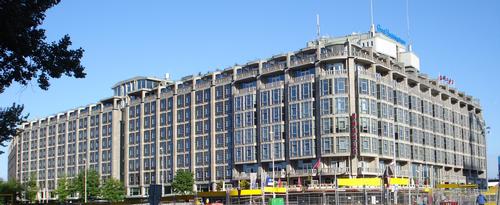 Rotterdam GroothandelsgebouwPhoto: F.Eveleens CC 3.0 Unported no changes made
Rotterdam GroothandelsgebouwPhoto: F.Eveleens CC 3.0 Unported no changes made
After the war, reconstruction began along the lines of the Basic Plan for the Reconstruction of Rotterdam. In a drive for renewal and modernization, many damaged buildings are not repaired, but demolished, such as the building of the Bijenkorf van Dudok. Reconstruction is in full swing in the 1950s. Rotterdam acquires the image of a 'working city' and develops into a model of modernity. In 1953 the Lijnbaan is opened, the first pedestrian shopping street in Europe. The progressive design attracted a lot of international attention. The new Central Station was completed in 1957, with the then hypermodern Groothandelsgebouw from 1953 next to it. On the occasion of the Floriade, the Euromast was erected in 1960. Together with the famous sculpture 'De Verwoeste Stad' by Ossip Zadkine, the Euromast becomes a symbol of post-war Rotterdam. In 1970 the Euromast was raised by erecting a Space Tower, bringing the total height to 185 meters. Simultaneously with the recovery of the ports, plans are also being developed to disconnect the city and port area. The aim is to achieve this by constructing new port areas in the direction of the sea. South of the Nieuwe Waterweg, the Botlek area, Europoort and the Maasvlakte will be constructed successively, with enormous tank storage capacity for crude oil. Large refineries are being built in Pernis, Rozenburg and further west. The port activities are now growing so fast that in 1962 the port of Rotterdam becomes the largest port in the world. The construction of the metro began in 1960, which opened in 1968 as the first metro in the Netherlands. This connects the 'south' districts with the center. In 1970, the opening of the new Ahoy halls took place near Zuidplein. Partly due to the construction of the Weena, Rotterdam gets a skyline with various skyscrapers in the 1990s. At 151 meters, the Delftse Poort Building will be the highest skyscraper in Rotterdam. In 1993, due to the opening of the Willemsspoort tunnel, the track disappeared from the center of Rotterdam. With the completion of the Erasmus Bridge in 1996, Rotterdam gets a new symbol. In the 21st century, Rotterdam will have prominent new buildings such as the Markthal, De Rotterdam and a brand new Central station.
Rotterdam Erasmus bridgePhoto: Massimo Catarinella CC 3.0 Unported no changes made
Sights
Rotterdam is an emerging city and is on more and more lists of cities you must visit.
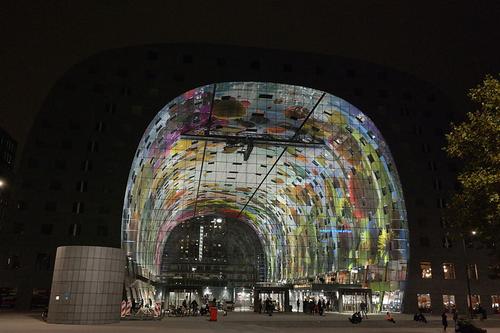 Market Hall at NightPhoto: Steven Lek CC 4.0 International no changes made
Market Hall at NightPhoto: Steven Lek CC 4.0 International no changes made
The newest addition is the enormous market hall, which decorated the cityscape in 2014. The hall has an un-Dutch allure, you expect something similar in major world cities, but not in Rotterdam. Begalve to a market hall, there is room for housing and there is a large parking garage under the building. The market hall was designed by the architectural firm MVRDV and has an artwork by Arno Coenen on the inside that has the appropriate title the cornucopia.
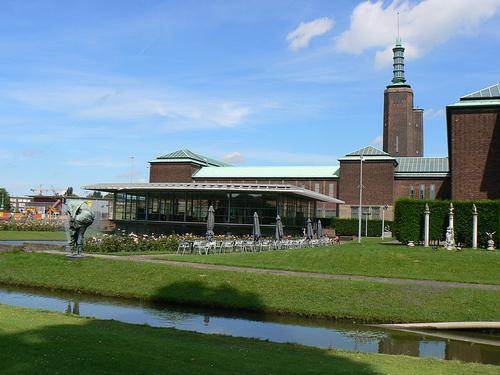 Boijmans van Beuningen RotterdamPhoto: K. Siereveld in thr public domain
Boijmans van Beuningen RotterdamPhoto: K. Siereveld in thr public domain
Museum Boijmans van Beuningen contains collections of old and modern painting, including a number of masterpieces, drawings and prints. The museum also has a sculpture park. Famous old paintings include: Christ visiting Mary and Martha by Pieter Aertsen, The Transfiguration of Mary from Geertgen to Sint Jans, The Peddler of Jeroen Bosch, Saint Christopher by Jeroen Bosch. The halls in the Van der Steur building from 1935 show the origins of Impressionism and Modernism. There are works by Vincent van Gogh, Claude Monet, Rembrandt van Rijn, Paul Cézanne, Camille Pissarro and Edgar Degas, among others. Paintings from modern art include Kees van Dongen and Piet Mondriaan. Surrealists can be seen here permanently, such as works by Salvador Dalí, René Magritte, Max Ernst and Man Ray. There is also a contemporary art collection featuring works by Andy Warhol, Claes Oldenburg, Donald Judd and Joseph Beuys. The museum is closed until 2026 due to a major renovation.
 Depot BuildingPhoto: Arie Verrijp in the publice domain
Depot BuildingPhoto: Arie Verrijp in the publice domain
In the meantime, a brand new depot building that is open to the public is under construction and will open its doors in 2021. The museum itself says the following about it: "The design by the Rotterdam architect Winy Maas of MVRDV reaches with its forty meters as high as the museum tower. And offers residents and other visitors a beautiful panorama of the city from the freely accessible roof garden with restaurant. and its harbor. The arrival of Depot Boijmans Van Beuningen increases the appeal of the Museum Park as an international art venue. The 40-meter-high reflective building has the potential to be a new icon for Rotterdam and attract 100,000 visitors a year. "
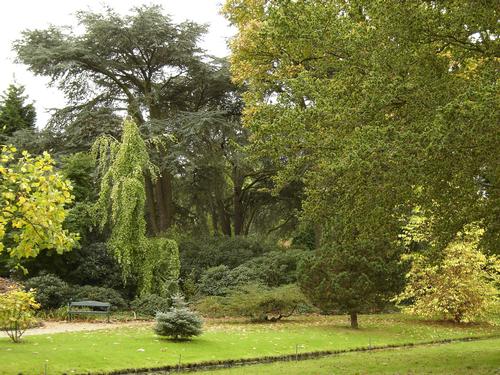 Rotterdam Arboretum TrompenburgPhoto: Wilma Verburg CC 2.5 Netherlands no changes made
Rotterdam Arboretum TrompenburgPhoto: Wilma Verburg CC 2.5 Netherlands no changes made
Arboretum Trompenburg is an arboretum on the Honingerdijk. It covers an area of 6 hectares. The park has a history that dates back to the 19th century and is inseparable from the (Van Hoey) Smith family. Despite its relatively small surface, the arboretum is one of the most prominent botanical gardens and arboretums in the Netherlands and is affiliated with the Dutch Association of Botanical Gardens. It has long enjoyed greater fame abroad, but since 1958, when the garden was opened to the public, appreciation has grown steadily domestically as well.
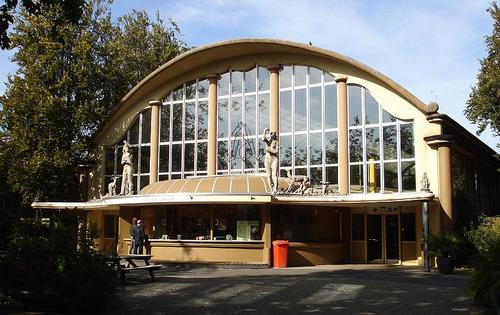 Zoo Blijdorp RotterdamPhoto: Wikifrits in the public domain
Zoo Blijdorp RotterdamPhoto: Wikifrits in the public domain
The Diergaarde Blijdorp is one of the oldest zoos in the Netherlands. Since 1988, Blijdorp has been using a 'master plan' that has changed the entire zoo. According to the master plan, animals are ordered by continent, in natural looking biotopes. Not only animals, but also plants and cultural elements from the simulated biotope are shown.
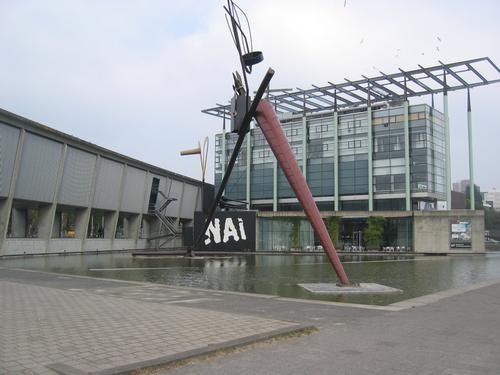 New Insitute RotterdamPhoto: Olafcg CC 3.0 Unported no changes made
New Insitute RotterdamPhoto: Olafcg CC 3.0 Unported no changes made
In addition to temporary exhibitions on architecture and planning, there is a permanent exhibition on public housing in the Netherlands from 1850 (GeWoon Architecture) in the Netherlands Architecture Institute (now called the New Institute). The museum has a large collection of drawings, sketches, models, photos, books and magazines about architecture. The library and the model depot are public. The museum also owns the archives of architects such as Dudok, Cuypers, Berlage, Gispen and De Klerk. Next to the actual building is the Sonneveld House, this former home is also part of the museum. The Sonneveld House was designed by the architects J.A. Brinkman and Van der Vlugt in 1929 and is an example of the Nieuwe Bouwen in style. The interior has been restored to its original state. Since January, after a merger with the institute for design and fashion and the Virtual Platform, the museum has been transformed and renamed the New Institute.
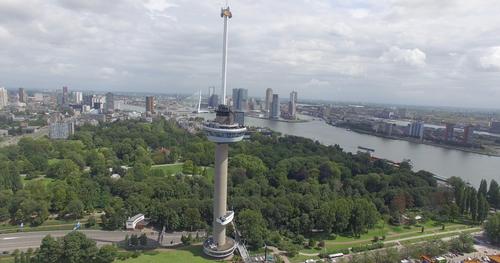 Rotterdam EuromastPhoto: Hanno Lans CC 2.0 Unported no changes made
Rotterdam EuromastPhoto: Hanno Lans CC 2.0 Unported no changes made
At 185 meters, the Euromast is the highest tower in the Netherlands that is open to the public. On the occasion of the Floriade in 1960, the Euromast was built by architect H.A. Maaskant and contractor J.P. van Eesteren in the Park, near the entrance to the Maastunnel. The building was officially opened by Princess Beatrix on March 25, 1960. The location was chosen strategically: those who drove to Rotterdam on the then highways saw the 107 meter high tower (including flagpole). In 1970, an 85-meter-high structure was placed on top of the Euromast: the Space Tower, making the Euromast the tallest building in Rotterdam again. The tower now has a total height of 185 meters. Visitors can be taken from the Euroscoop deck at 112 meters to the highest point at 185 meters with the Euroscoop, a glass lift. Visitors are taken to the original highest point by two elevators, each traveling 4 meters per second.
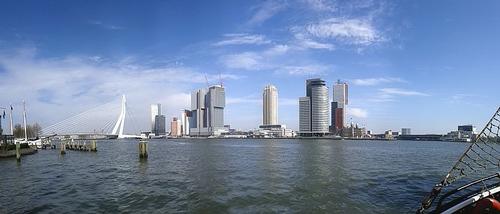 Panorama Kop van Zuid RotterdamPhoto: Arnout Vos CC 3.0 Unported no changes made
Panorama Kop van Zuid RotterdamPhoto: Arnout Vos CC 3.0 Unported no changes made
Kop van zuid is the newly developed area along the Maas. It consists of many high-rise buildings and a large cruise terminal where the largest cruise ships in the world can dock. A special feature is the building "de Rotterdam", which was completed in November 2013. The building resembles a city in itself and consists of three transparent towers, each 150 meters high. It has an office and residential function and a hotel is located in the building. De Rotterdam has a beautiful entrance and there are cafes, restaurants and sports clubs on the ground floor. The building was designed by Rem Koolhaas of the architectural firm OMA and is the icing on the cake of Rotterdam's Manhattan.
Tips
The Spido is a well-known tourist attraction. Every day Spido organizes various types of cruises through the ports of Rotterdam from the departure point, Willemsplein at the foot of the center side of the Erasmus Bridge. For example, a 75-minute cruise through the Maashaven, Rijnhaven, Waalhaven, Leuvehaven, among others, along the Euromast and the Eemhaven and a 2½-hour cruise towards Rozenburg which calls at the Botlekhaven, the Laurenshaven and the Eemhaven.
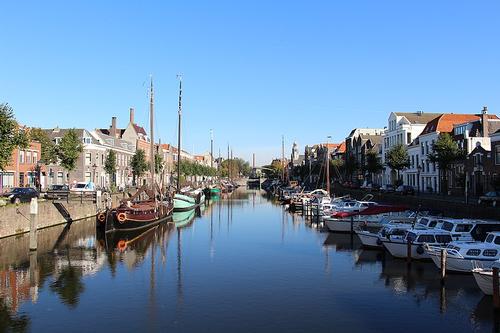 Delfshaven RotterdamPhoto: Fred Romero CC 2.0 Generic no changes made
Delfshaven RotterdamPhoto: Fred Romero CC 2.0 Generic no changes made
Nightlife in Rotterdam is somewhat fragmented. Important areas are De Oude haven, Stadhuisplein, Delfshaven and Witte de Withstraat. The Nieuwe Binnenweg (Café Ari, Rotown) is also a well-known entertainment area. There are countless food and beverage outlets. Rotterdam is also the birthplace of the gabber scene and has internationally renowned clubs. Catwalk is located in an old pedestrian tunnel under the Weena and Off_Corso, which has been well-attended for years, is located in a former cinema. Everything is played at this special location, from techno to clubhouse. The Bootleg DJ Café is a breeding ground for new DJ talent and is open late into the night. At the more distant De Unie, your feet regularly go off the floor on funky dance and party evenings.
The underground scene in Rotterdam is far from the glitter and glamor of the big clubs. Besides a stage for new bands, Rotown is also a place for relaxed nightlife and dancing for independent spirits. In 2010 Rotown was named Best Music Stage in the Netherlands. You can relax with a drink at café De Witte Aap in Witte de Withstraat, which has been voted the best bar in the world by the Lonely Planet, the international travel guide for backpackers.
Useful links Rotterdam
BBC Country ProfilesWorld Fact Book Explore all Countries
How to call
Last updated December 2025
Copyright: Team - The World of Info